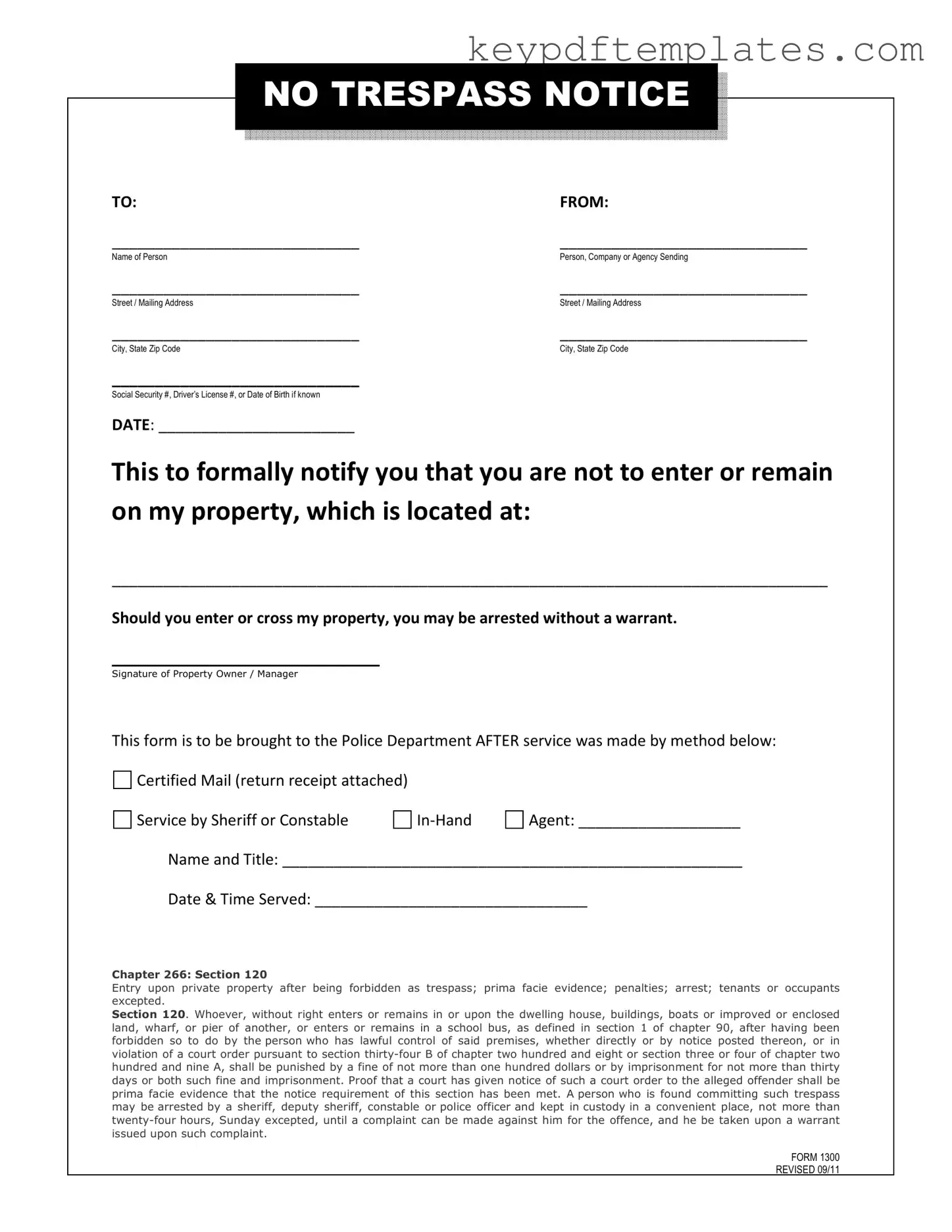Get No Trespassing Letter Form
A No Trespassing Letter is a formal document that informs individuals they are not permitted to enter or remain on a specified property. This letter serves as a legal warning, outlining the consequences of trespassing, which may include arrest without a warrant. Utilizing this form can help property owners assert their rights and protect their space effectively.
Modify Document Online
